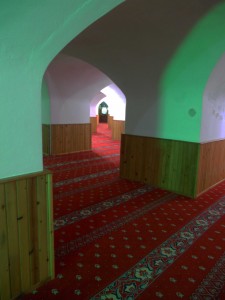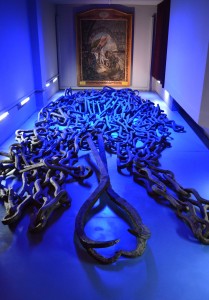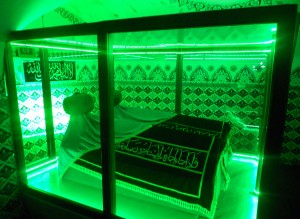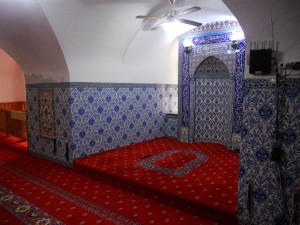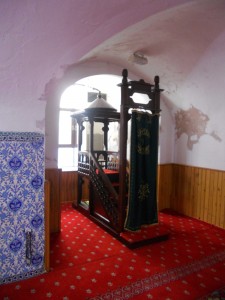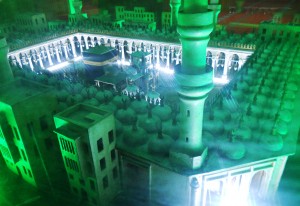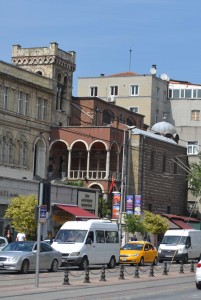 The Church of St. Benoit now lies within the precincts of the French Lycée of St Benoit on Kemeraltı Caddesi. Mamboury says that the church was founded in the late 14th century; Freely puts the date at 1427. Whatever the exact time, what we see now is vastly altered from the original church due to the devastating effects of fires in 1686, 1696, 1731 and 1865.
The Church of St. Benoit now lies within the precincts of the French Lycée of St Benoit on Kemeraltı Caddesi. Mamboury says that the church was founded in the late 14th century; Freely puts the date at 1427. Whatever the exact time, what we see now is vastly altered from the original church due to the devastating effects of fires in 1686, 1696, 1731 and 1865.
This was a Latin, rather than Byzantine church, being occupied by Benedictines, Franciscans, Jesuits and Lazarists at different times, but it was established before the Ottoman conquest of 1453. The belltower appears to be largely original and may be the only part of the church that survives from the Byzantine period. Mamboury dates the columned porch above the stairs to the 15th century but the columns themselves appeared in the restoration after the fire of 1686.
The extent to which the tower can be said to be a 15th century construction is open to some doubt.
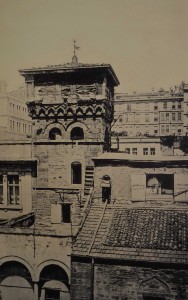
Plate 21 of Leon de Beylie's 'L'Habitation Byzantine' from 1903
This photograph from the late
19th century shows a very different appearance from the present day.
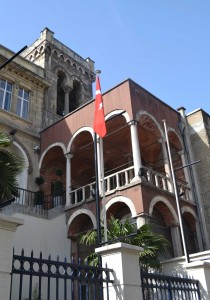
The bell tower in 2014
At some stage, a rather nice Byzantine capital appeared above a central column. On the 19th century photograph, a bricked-up section appears in the area in which the column is now placed. Presumably, the column and capital represent part of an attempt to restore an earlier appearance.
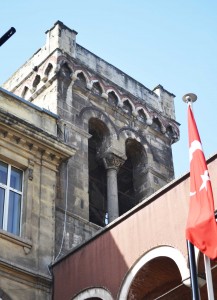
The Byzantine capital in the tower
The nave is a large, blocky structure. This picture illustrates the southern part, restored in 1732. The remainder, from 1871, is a utilitarian sort of job, replacing what is reputed to have been a rather nice vestibule with decorative inscriptions. These, however, were lost in the 1865 fire.
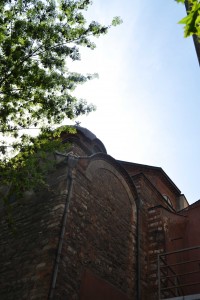
Southern section of the nave.

Posted October 28, 2014 Posted by Adam in Uncategorized
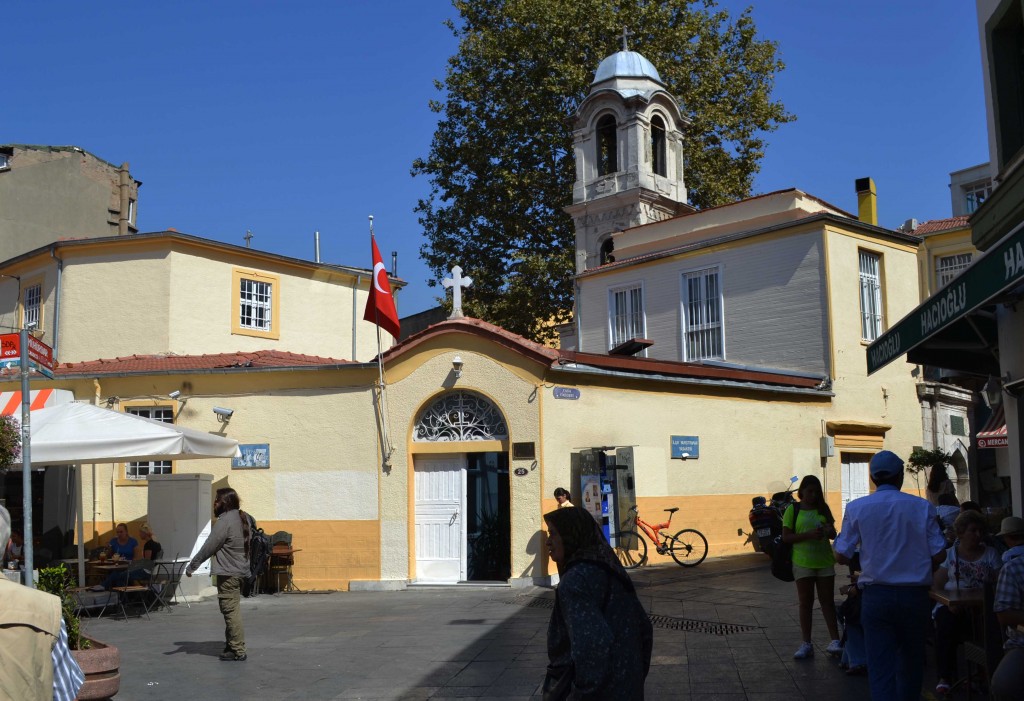

Posted October 27, 2014 Posted by Adam in Uncategorized
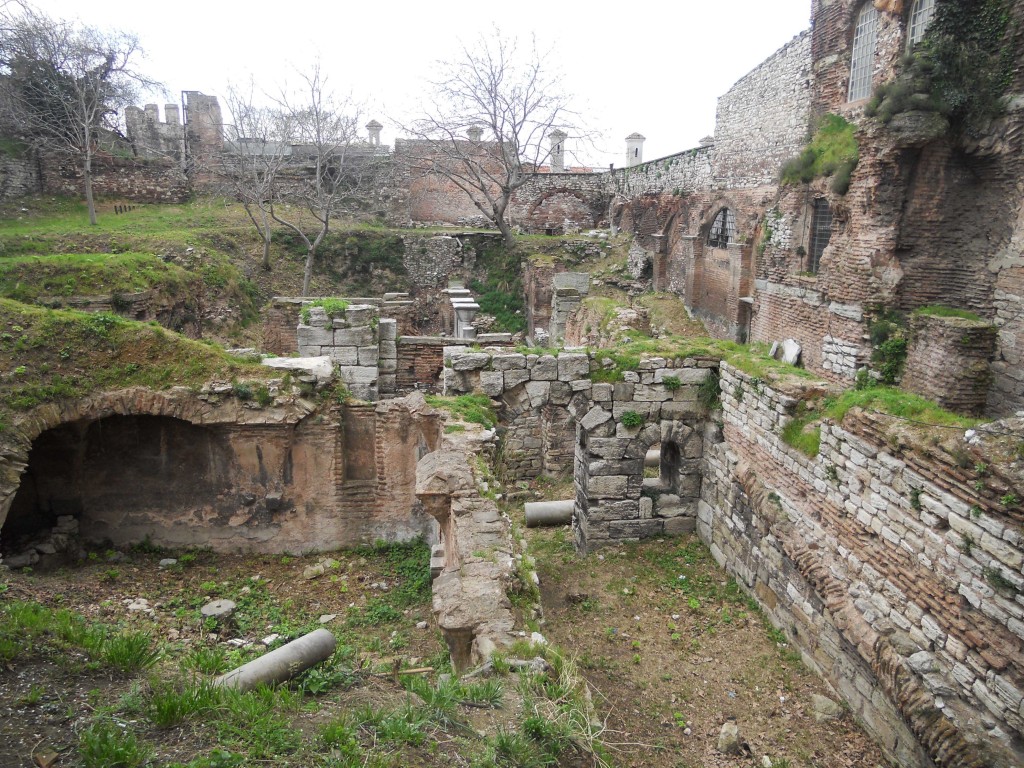

Posted October 26, 2014 Posted by Adam in Uncategorized
Not a Byzantine church but a place of worship in what Mamboury (1925) identifies as a Byzantine building – the vault of the old Galata Castle, the traditional anchoring point of one end of the great chain across the Golden Horn. The ceiling of Yeraltı Camii is very low and is supported by 54 thick columns.
There are two tombs in the mosque, said to be those of two soldiers who were killed in the 7th century Arab siege of Constantinople. As is usual with these things, the locations of the tombs came to a dervish in a dream. Sultan Murat IV then had the bodies placed in a more fitting resting place.
The roof is so low that the mihrab and mimber appear to be squashed.
In the mosque, there is a rather charming model of al-Masjid al-Haram, the holiest site of Islam.

Posted October 25, 2014 Posted by Adam in Uncategorized
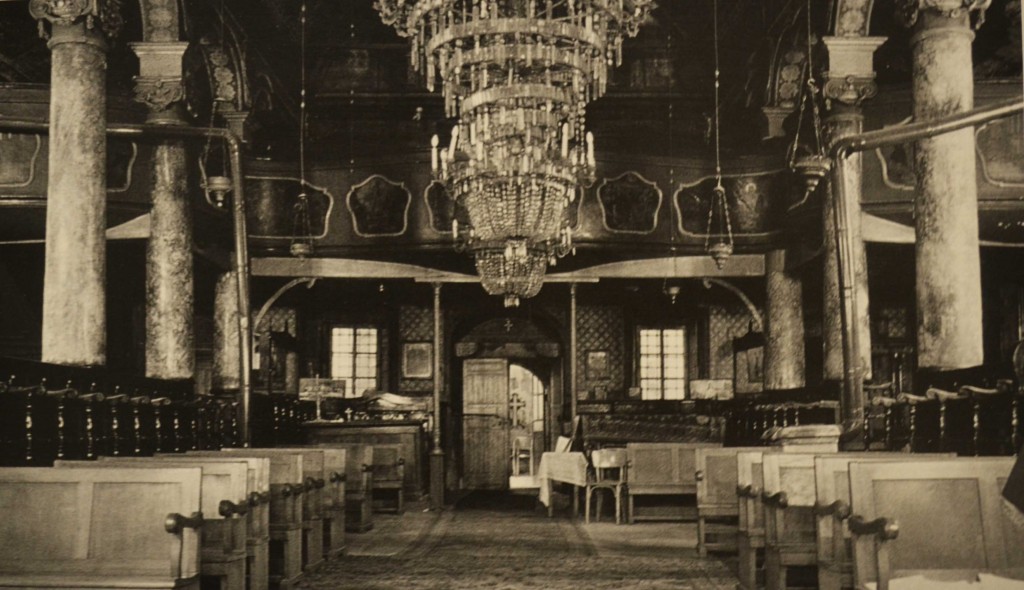
From: Karaca, Z (2008) Istanbul’da Tanzimat Öncesi Rum Ortodoks Kiliseleri. YKY

« Previous Entries Next Entries »

